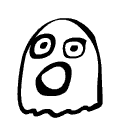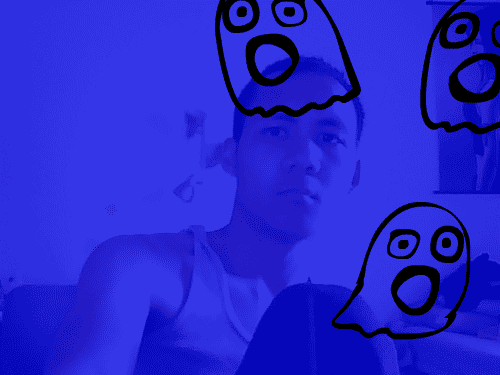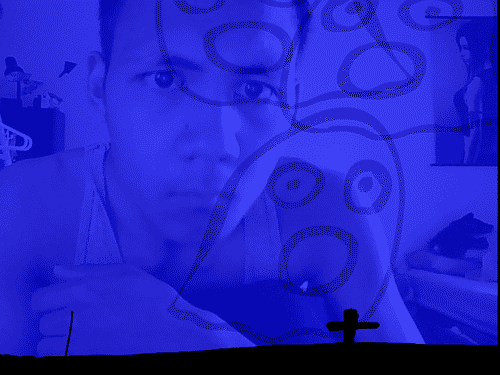Boo Revisited
Overview
What was original going to be a sea creature, which turned into a limited ghost character, has become three animated ghosts in this final project. This time, there are three ghosts that hover around with smoother, more randomized movement, an animation loop, and an accompanying noise. In short, three ghosts hover around any face they see. When the viewer approaches, the ghosts become transparent and cackle.
Motivation
The original version of this project says it all:
People already have an strong tendency to anthropomorphise animals and even objects. My goal is, using very rudimentary interactivity under a layer of spritely animation, to bring out empathy in viewers.
To make the tendency to anthropomorphise stronger, I strengthened the animation of the ghost, gave them more unpredictable movement, and added more vibrancy to the background, as well as sound.
Interactive Paradigm
The user visits the project website with a webcam-enabled computer. The web page contains a flash applet that displays the user's face in a bluish hue. As the person moves around, ghosts follow their face on screen. When the user approaches close enough to the creatures, they becomes agitated, turns transparent, and makes a noise.
Technical Description
It works using the face detection library opencv, ported to flash. The position of the creatures follow the position of someone's face. A tween library in flash causes the ghosts to move smoothly towards a face rather than being a 1-to-1 mapping of the face's position. Face detection also will determine the distance of the face from the computer.
Documentation
The new ghost sprite is a lot more lively, being animated.
There are also now three of them.
And they become transparent when you approach.
The project can be found at http://jettery.com/visproject (note that Mac support seems to be iffy)


